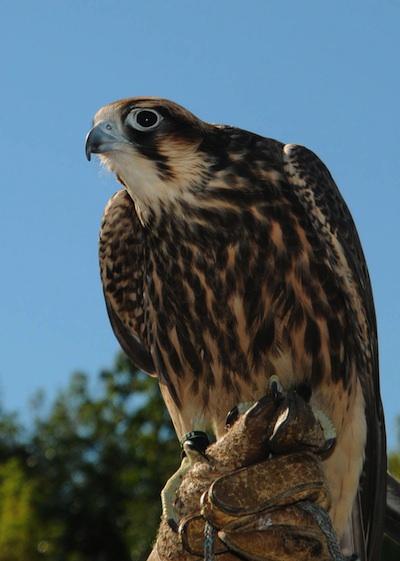
Efforts to restore peregrine falcons in Shenandoah National Park are meeting with success/USFWS
Ongoing efforts to see peregrine falcons soaring above Shenandoah National Park in Virginia have been showing some success, with nine falcons recently having been reared in the park by human foster parents.
While it's a bit early to ensure that you'll be able to spot peregrines winging about the park, the program continues to build on past success. The work has been going on since 1994, when the recovery program in Shenandoah started with a single falcon. Now, park officials report that nine falcons chicks have been "hacked" there between early May and mid-July.
Shenandoah's staff has been working on this project with the Center for Conservation Biology at the College of William & Mary, the Virginia Department of Game and Inland Fisheries, and the Virginia Department of Transportation. The 'foster' peregrine chicks used for this program came from coastal bridge nests in Virginia where juvenile peregrine survival has been low due to premature fledging over open water.
Additionally, a current pair of nesting peregrines that includes an adult male fostered in the park in 2008 has successfully fledged three young in the park this year.
The restoration process, called 'hacking,' consists of taking at-risk falcon chicks from nest sites in eastern Virginia, and bringing them to Shenandoah, where they are placed in protective wooden boxes (hack boxes) for approximately 14 days. The hackbox is typically placed on a high cliff ledge that mimics a natural peregrine falcon nest. The boxes are constructed so that the young birds can view and acclimate to their environment as they mature, but are protected from predators such as raccoons. While they are in the boxes, park staff provides for their care and feeding, and monitors their condition, all the while minimizing contact with humans.
According to a park release, when the falcons are ready for flight, the boxes are opened and the falcons are allowed to leave. They will continue to be fed and monitored at the hacksite as they learn to hunt for themselves. The young fledglings will often mimic their brood mates as they refine their flight and hunting skills. Generally, the falcons remain in the local area for several weeks. By late-July they begin to take extended "practice" flights of more than 200 miles. By mid-August, they leave the area by wandering into other states and eventually migrating south or east as fall approaches. It is hoped that the birds will imprint on Shenandoah's prominent cliffs and return as breeding adults in 2-3 years.
The goal of this project is to boost peregrine falcon numbers in the Central Appalachians where peregrine recovery has been slow. This restoration work directly supports the conservation and long-term recovery efforts of state-threatened peregrine falcons in the park and throughout the Central Appalachians. As a result of the park's ongoing restoration efforts, the park has supported a single nesting pair from 1994-1997, 2005-2007, and 2009-2014 (comprised of three different pairs). During this time, these pairs have seen a 62 percent breeding success rate.
The park's current nesting peregrine pair fledged three young in late June. The pair represents one of only two reproductive peregrine pairs in the mountains of Virginia. The adult male peregrine from this pair was restored in Shenandoah in 2008 on Hawksbill Mountain. The higher peaks and cliffs of Shenandoah represent some of the best places to observe these amazing/rare birds of prey in the mountains of Virginia.



Comments
More very good news. Hope I spot one next weekend!